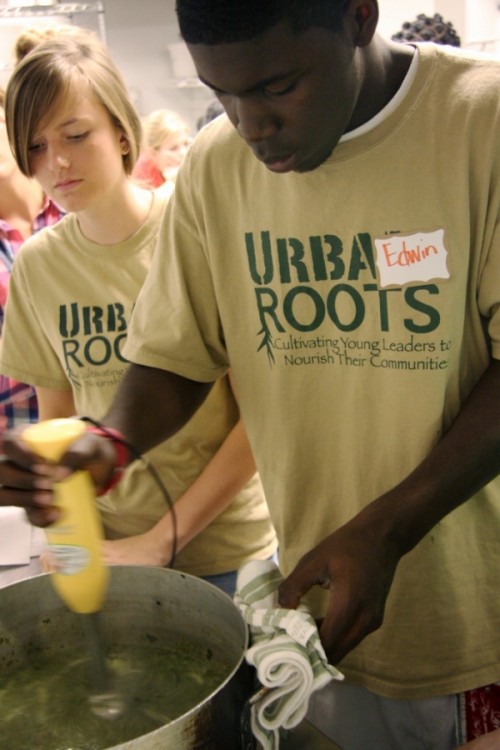This spotlight is a feature in a series of the USDA Community Food Project Competitive Grant Program (CFP) completed for WhyHunger’s digital storytelling website, Community Voices, that showcases grassroots organizations and community leaders through dynamic stories and pictures, to give a real view of projects that are working to alleviate food insecurity and increase communities’ access to nutritious food. We believe that telling one’s story is not only an act of reclaiming in the face of the dominant food narrative of this country, but also an affirmation that the small acts of food sovereignty happening across the country add up to a powerful, vital collective. Up today: Urban Roots, Austin, TX. Story and pictures by David Hanson.
 Urban Roots (UR) began as a program of Youth Launch in 2008. After an affluent start to the 21st Century, 2008 was not a great year to start a business or non-profit in the US. But it turned out to be great timing for a youth-based urban production farm project in Austin. You see, despite the national economic downturn, Austin was experiencing a decade’s worth of growth that was only curbed by the recession. And while this economic climate provided a solid backdrop for the founding and flourishing of this particular food justice non-profit, it brings up some increasingly common questions about urban food systems, food security organizations and how they fit into gentrifying urban environments.
Urban Roots (UR) began as a program of Youth Launch in 2008. After an affluent start to the 21st Century, 2008 was not a great year to start a business or non-profit in the US. But it turned out to be great timing for a youth-based urban production farm project in Austin. You see, despite the national economic downturn, Austin was experiencing a decade’s worth of growth that was only curbed by the recession. And while this economic climate provided a solid backdrop for the founding and flourishing of this particular food justice non-profit, it brings up some increasingly common questions about urban food systems, food security organizations and how they fit into gentrifying urban environments.
By the late 2000s, Austin had the momentum of a decade of unprecedented growth that had established it as a cultural and economic hub for Texas. Between 2000 and 2010, Austin’s population expanded by roughly 20%. Much of that growth stemmed from young professionals who brought along their trademark accessories: new/improved housing, higher rents, artisanal cuisine, renovated infrastructure like parks, bike lanes and greenways, high-tech software jobs. In a word, gentrification.
But Austin was different from the other ten fastest growing cities during that time in one crucial factor: it was the only city to suffer a net loss in its African-American population. While the greater population of Austin grew during the 2000s, the African-American population declined by 5.4%. A simplified version of a deeply complex issue can attribute the loss to a number of factors.
Following the encouragement of the city’s Master Plan of 1928, Austin’s African-American population had concentrated in neighborhoods on the city’s east side. Families owned homes and developed businesses. As more wealth moved into the city during the gentrification of the late 90s and 2000s, east-side neighborhoods became attractive for new arrivals. Property values increased and African-American homeowners were enticed to sell.
But other factors attributed to this shift, as well. Many feel that excessive force from police could have played a role. Of the ten unarmed civilians killed by police between 2002 and 2012, seven were African-American, two were Hispanic, and one was white, despite a disproportionately lower overall African-American population in the city. Furthermore, the school system suffered, partly due to an Austin Independent School District (AISD) policy that allowed for private fundraising to be allocated to specific school districts, thus digging a deeper moat between wealthy neighborhoods and the historically segregated lower-income ones, such as east Austin.
All this is to say that Urban Roots came onto the scene in Austin during a time of great opportunity and great need. The food scene was gentrifying along with real estate. Boutique food trucks sprouted like wildflowers below the shady oak trees of downtown’s bungalow neighborhoods. Relocated chefs raised the bar of pub food and Tex-Mex. The local food movement had arrived – the food publication Edible Austin launched and farmers markets became cool again, only this time a bit more pricey than their truck farm predecessors.
Read the full profile at Community Voices, a WhyHunger digital storytelling site showcasing voices of leaders and communities across the country on the front lines of food justice.


